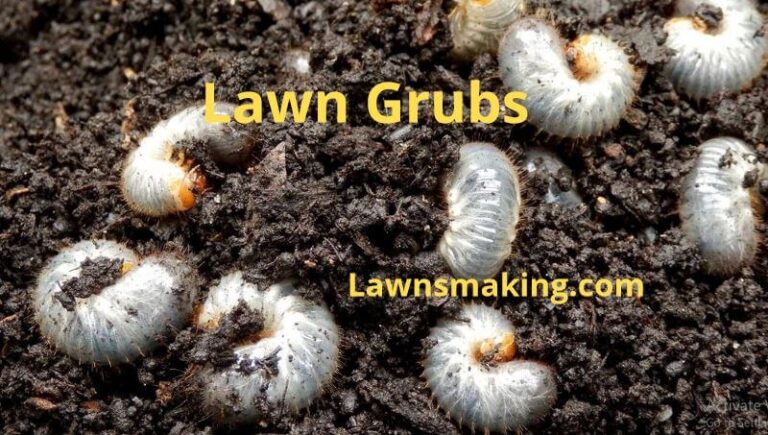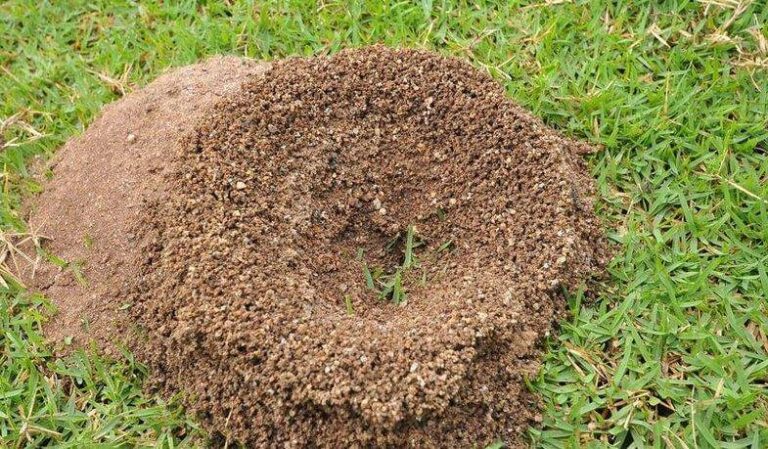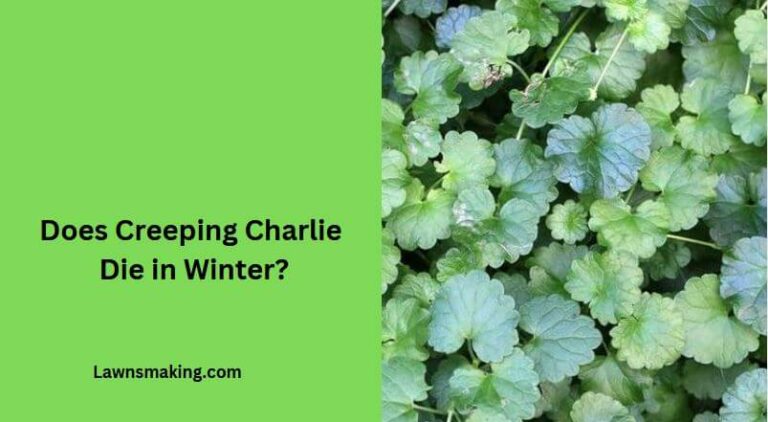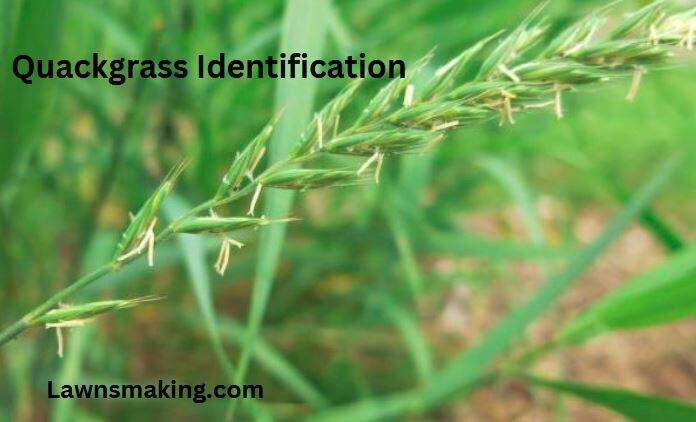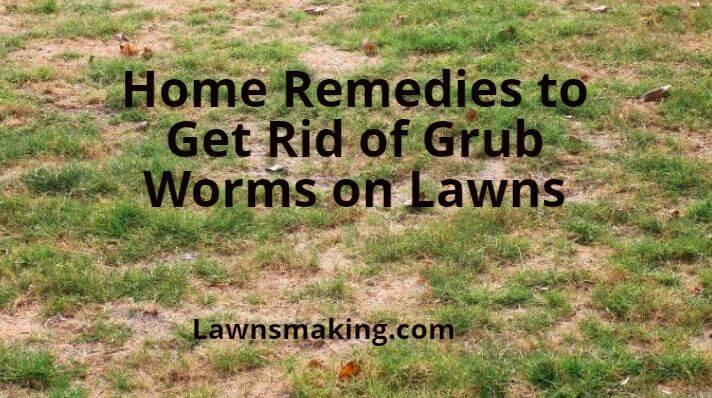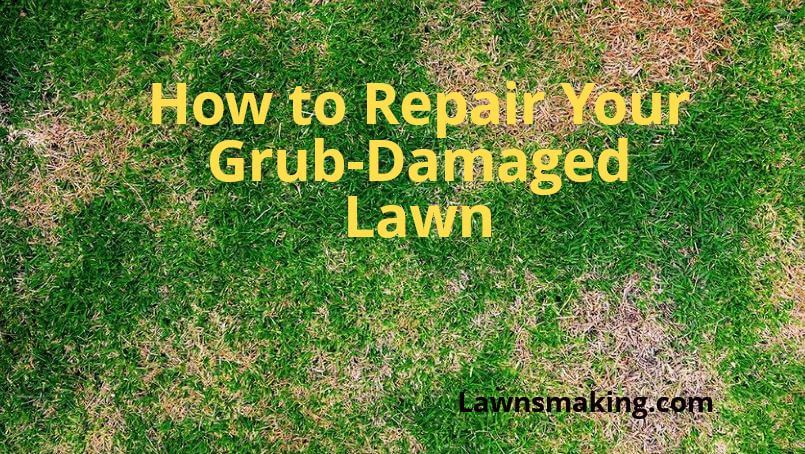
Are you disheartened by the sight of your once-lush lawn ravaged by grub damage? Dealing with the aftermath of such devastation can be demoralizing, and you may be left wondering, ‘Will grub damaged lawn grow back?’
A grub-damaged lawn will grow back once you address the underlying grub infestation through targeted treatments, improving soil health, and promoting proper grass growth. Therefore, following proper lawn care practices is vital in helping your lawn bounce back and thrive again.
If you’re grappling with the frustrating sight of a lawn marred by grub damage, you’re not alone in wondering whether it can recover. In this article, I will explore “how to identify grub presence” and then discuss ways to repair your grub-damaged lawn—from applying grub control to proper mowing practices. Let’s get started!
How to Identify Grub Presence on Your Lawn
Before setting off on a journey to repair your lawn, confirm the presence of grubs. Here is how to identify grubs on your lawn:
- Be on the lookout for brown patches of dead grass in your yard. These patches are often the initial sign of grub damage.
- According to Clemson University, Grubs feed on grass roots—making the soil spongy and easy to pull in affected regions.
- Grubs are very active in late summer and early fall. Consequently, these are the ideal times to inspect your lawn for grub infestation.
- To confirm your suspicion, dig up a small section of the affected area. Chances are you will find grubs beneath the surface.
After identifying and verifying grub presence on your lawn, proceed to the next step—repairing your grub-infested lawn.
Will Grub Damaged Lawn Grow Back? 8 Ways to Repair Grub-Infested Lawn
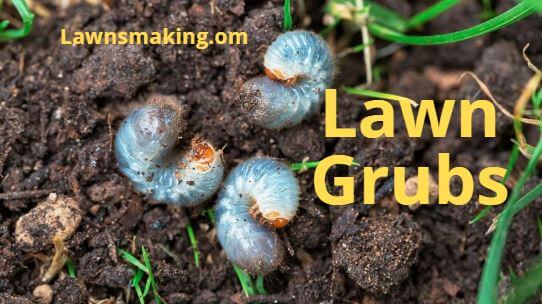
Don’t let grub damage leave your lawn in disarray. Here are proven techniques to help you revive your lawn and restore it to its original glory.
1. Apply Grub Control
Once you have verified the presence of grubs, it is time to act. Select a grub product depending on the specific type of grub infestation and the severity of your grub infestation. Here are grub products you should consider using:
- Beneficial Nematodes: Ideal for all types of grub infestations, including Japanese beetles, European chafers, and June beetles.
- Milky Spore Disease: Ideal for Japanese beetle grub infestations.
- Chemical Grub Control (Synthetic): Ideal for severe grub infestations where immediate control is necessary. Example of product (Scotts GrubEx).
- Chemical Grub Control (Long-Lasting): Ideal for: Preventative treatment against future grub infestations. Example of product (Bayer Advanced 24-Hour Grub Killer Plus).
Accurate application of grub control is vital. Therefore, consider the manufacturer’s recommended application rates and timing closely.
It’s advisable to apply grub control in late spring and early summer (April to May and June to July) as it best aligns with the grubs’ life cycle. However, you may want to apply grub control in late summer or early fall.
To activate the grub control and ensure it reaches the grubs, opt for the deep watering of your lawn.
Lastly, consider the application of nematodes if you want an eco-friendly solution to grub infestation.
2. Remove Dead Grass
With the grubs under control, embark on a cleanup process, which includes raking away dead debris.
Use a dethatching tool to remove damaged or dead grass effectively. Dispose of the removed grass clippings and thatch properly to mitigate the further spread of grubs. Follow these steps to dethatch your lawn:
- Select the dethatching tool: dethatching rake, dethatching machine, or power dethatcher.
- Adjust the blade height (if applicable).
- Dethatch in rows: Start dethatching by making parallel passes across your lawn.
- Follow a pattern: For thorough thatch removal, dethatch in a pattern, such as going north to south for the first pass and then east to west for the next pass.
- Water and fertilize: Water your lawn to help it recover. Also, consider fertilizing to promote new grass growth.
Please avoid excessive dethatching since thatch provides nutrients like nitrogen to your lawn.
Level the soil surface after removing dead and damaged grass to prepare the soil for overseeding.
Additionally, repair low spots in your lawn to guarantee a smooth surface for reseeding.
3. Aerate the Soil
With the soil prepped, now it’s time to address soil health.
Depending on your lawn’s condition and preferences, rent or hire a lawn aerator. A spike aerator or a core aerator will be ideal.
Aeration works best and is effective when the soil is moist, not soaked or soggy.
When aerating, create evenly spaced holes in the affected areas of your lawn, as the process enhances soil structure.
Allow the holes or cores to break down on the lawn surface, with their decomposition contributing to overall soil health.
4. Overseed
After soil preparation, introduce new life into your lawn.
Select a grass blend suitable for your region’s prevailing climate and soil conditions. Moreover, please opt for a grass variety that matches your existing lawn.
Table 1: Here is a table highlighting common grass species and their general climate and soil requirements.
| Grass Species | Best Climate Parameters | Preferred Soil Conditions |
| Kentucky Bluegrass | Cool temperate to cold | Well-drained loam or clay |
| Fine Fescue (Creeping Red, Chewings, etc.) | Cool temperate to cold | Well-drained, acidic to neutral |
| Perennial Ryegrass | Cool temperate to mild | Well-drained, fertile |
| Bermuda Grass | Warm temperate to hot | Sandy loam, well-drained |
| Zoysia Grass | Warm temperate to hot | Well-drained, sandy-loam |
| St. Augustine Grass | Warm temperate to hot | Sandy, loamy, well-drained |
| Buffalo Grass | Warm temperate to hot | Sandy, clay, well-drained |
| Tall Fescue | Cool temperate to mild | Well-drained, adaptable |
| Centipede Grass | Warm temperate to hot | Acidic sandy loam, well-drained |
| Bahia Grass | Warm temperate to hot | Sandy, loamy, well-drained |
For uniform seed distribution, utilize a seed spreader or broadcast spreader.
Lightly rake the soil after spreading the grass seed to enhance seed-to-soil contact, which encourages the germination of new seeds.
Keep the newly-seeded areas moist through regular watering. Remember that adequate moisture is necessary for seed germination and seedling establishment.
Finally, avoid heavy foot traffic on newly-seeded lawn areas to allow the grass to establish itself.
5. Choose Resistant Grass Varieties
To fortify your lawn against future grub infestation, consider planting grass varieties known for resisting pests such as grubs.
Opt for grass varieties that are resilient against grubs and thrive in your region’s climate and soil type. Here are five grub-resistant grass species:
- Fine Fescue (Creeping Red Fescue and Chewings Fescue)
- Tall Fescue
- Buffalo Grass
- Zoysia Grass
- Bermuda Grass
You can also contact local nurseries or garden centers, as they can provide valuable recommendations personalized for your area and climate.
Certain grasses perform best in specific environments. Consequently, selecting grass types suited to your region’s climate and soil will help your lawn survive grub infestations.
Table 2: Here is a table highlighting the best environments and ideal conditions for popular grub-resistant grass species.
| Grass Species | Best Environment | Ideal Conditions |
| Kentucky Bluegrass | Cool temperate to cold climates | Cold winters, moderate to high rainfall, well-drained loamy or clay soils |
| Bermuda Grass | Warm temperate to hot climates | Hot summers, mild winters, well-drained sandy loam soils, full sun |
| Zoysia Grass | Warm temperate to hot climates | Hot, humid summers, mild winters, well-drained sandy-loam soils, partial shade tolerance |
| St. Augustine Grass | Warm temperate to hot climates | Hot and humid weather, sandy and loamy soils with good drainage, some salt tolerance in coastal areas |
| Fine Fescue (e.g., Creeping Red Fescue) | Cool temperate to cold climates | Cooler regions with cold winters, mild summers, well-drained acidic to neutral soils |
Mix resilient grass varieties for added resilience since grass variety can help your lawn withstand severe pest challenges.
Remember that while tolerant grass varieties offer an extra layer of protection against grubs, proper lawn care plays a significant role in maintaining a grass’s resistance over time. These lawn care practices include:
- Regular Mowing
- Proper Watering
- Fertilization
- Aeration
- Weed Control and Pest Management
6. Fertilize Appropriately
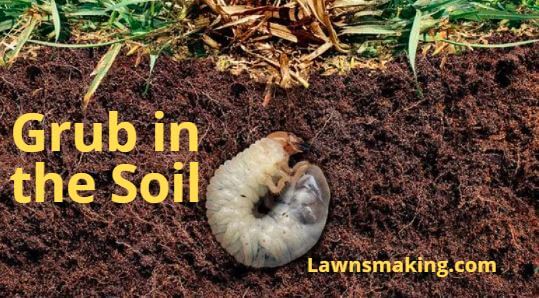
Proper fertilization significantly affects your lawn’s health, ensuring it receives essential nutrients.
Here are steps you can follow to ensure your lawn is getting appropriate fertilization:
- Conduct soil tests to determine your lawn’s nutrient requirements. The test will offer valuable insights into the soil’s deficiencies.
- Choose a balanced fertilizer containing the appropriate nitrogen, phosphorus, and potassium content (N-P-K) ratio for your lawn’s grass type.
- Apply the fertilizer following the recommended rates and schedule for your region. Remember that proper timing guarantees your lawn gets essential nutrients when needed most.
Be cautious with nitrogen since excessive application of this nutrient can promote grub infestation. Therefore, follow the recommended nitrogen levels for your grass and soil types.
Fertilize your lawn in fall and early spring to ensure your lawn has all the necessary nutrients for optimal growth and recovery.
7. Water Adequately
Following the best watering practices is vital for your lawn’s overall health. Here are ways to ensure your lawn is getting the ideal moisture content:
- Promote deep root growth by watering infrequently and deeply, giving your lawn a good soaking instead of numerous shallow watering.
- Use soaker hoses or sprinklers to ensure even deep watering across your lawn. Uneven watering can result in patchy growth.
- Proper timing of your watering sessions will help you mitigate pest issues and diseases. Consequently, water your lawn early in the morning, as the grass dries faster during the day.
- Pay attention to soil moisture levels and adjust the watering frequency to maintain consistent moisture levels—considering rainfall.
8. Mow Correctly
Mowing might seem straightforward. However, doing it the right way is crucial for your lawn’s appearance and health.
Adhere to the recommended mowing height for your specific grass type, as different grasses have different ideal mowing heights for optimal health.
Table 3: Here is a table highlighting the ideal mowing heights for popular grub-resistant grass species:
| Grass Species | Ideal Mowing Height (inches) |
| Kentucky Bluegrass | 2.5 to 3.5 |
| Bermuda Grass | 0.5 to 1.5 |
| Zoysia Grass | 1 to 2 |
| St. Augustine Grass | 2.5 to 4 |
| Fine Fescue (e.g., Creeping Red Fescue) | 1.5 to 3 |
Ensure your mower blades are sharp. Using dull blades can damage or tear grass, making your lawn susceptible to pests and diseases.
A rule of thumb is to adhere to the one-third mowing rule; never cut more than one-third of your grass’s height during a single mowing session. Cutting too much grass in a single session can induce stress on the grass.
Alternate your mowing patterns to avoid soil compaction, and remember to leave grass clippings on the lawn. These clippings break down over time and release essential nutrients to the soil.
How Do You Know If Grubs Are Gone?
Pouring a mixture of a few tablespoons of liquid dish soap and a gallon of water over a section where grubs were initially active will help you know if grubs are gone. If the grubs are present, they will begin to surface within a few minutes due to suffocation and disruption of their cuticles.
Observing your lawn’s condition can also help you know if the grubs are gone. If the grass starts to recover and the damage stops progressing, this is a sign that the grubs may be gone.
What Is a Natural Killer for Grubs?
Beneficial nematodes such as Steinernema carpocapsae and Heterorhabditis bacteriophora are a natural killer for grubs—making them a reliable biological control. These insect parasites are microscopic organisms that enter the grubs and release bacteria that kill them within days.
Moreover, these nematodes are environmentally friendly and pose no harm to beneficial insects, pets, and humans.
How Many Times Can You Treat for Grubs?
You can treat for grubs 2-3 times a season if using nematodes preventively on your lawn and every two weeks until the infestation subsides if using them curatively. Generally, the severity of the infestation and treatment type determines how often you treat grub infestations.
For instance, preventative grub treatments are usually applied once or twice yearly. Remember to follow the instructions for your grub control product on product labels.
Key Takeaways
The journey to recovery from a grub-damaged lawn is possible, and it starts with understanding the extent of the damage and implementing the right strategies. In our exploration of “Will Grub Damaged Lawn Grow Back?”, it has come to light that identifying grub presence, choosing the appropriate control methods, and adopting proper lawn care practices are pivotal steps in restoring your once-thriving green space.
